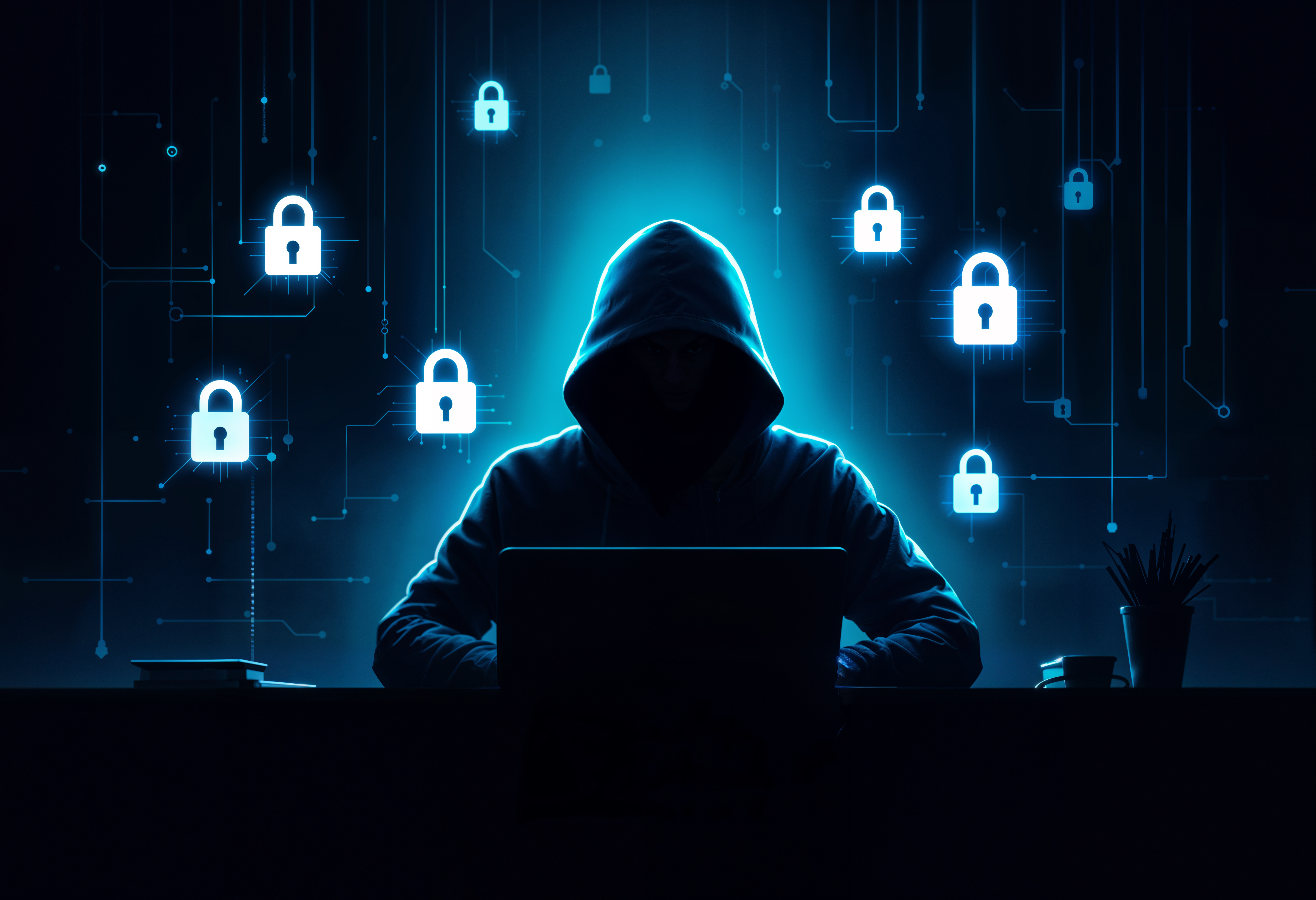What technological safeguards can prevent unauthorized access?

WebCoder
What technological safeguards can prevent unauthorized access?
In the 1990s, attacks were largely about stealing jewels, with thieves relying on brute force and physical means.Today, the nature of theft has changed completely.Modern criminals don’t need weapons or swords — a laptop and internet access are enough.Information has become the new jewel, and data is more valuable than gold.In this digital era, safeguarding information is just as vital as defending a kingdom once was.

How Do They Attack?
Malware, also known as malicious software, is created by cybercriminals to disrupt users and organizations. Its primary goal is to steal sensitive information or cause damage to systems. Common types of malware include:
-
Virus: A self-replicating program that attaches itself to clean files and spreads across a computer, infecting files with malicious code.
-
Trojan: Disguised as legitimate software, Trojans trick users into downloading them, allowing hackers to cause damage or steal data.
-
Spyware: A program that secretly monitors a user’s activity to collect sensitive information, such as passwords or credit card details.
We can secure ourselves from attackers through strong cybersecurity practices ,here are some of the categories,
Categories of Cybersecurity
- Network Security: The process of safeguarding a computer network from unauthorized access or malware.
- Application Security: Protecting application code and data from theft or cyberattacks. This includes addressing security factors throughout the design, development, and deployment of an application.
- Information Security: Protecting sensitive or private data, both in digital and physical form, including financial and personal information.
- Operational Security: A method that challenges IT and security professionals to view their operations from a hacker’s perspective. It includes behavioral monitoring, social media monitoring, and best practices for overall security.
What secret weapons do IT experts use to secure their systems?
Businesses can pick from a wide variety of Linux environments, including various distributions, system architectures, and components, depending on their requirements. This diversity improves security in addition to meeting a variety of user needs. Because Linux is so diverse, it is more difficult for hackers to conduct extensive attacks because flaws or exploits in one setup might not work in another. Because of this diversity, attackers cannot employ the same strategy on all Linux servers in the event of a cloud security breach. The uniform "monoculture" of Windows environments, on the other hand, offers a more consistent and predictable target, increasing the effectiveness and reach of attacks.
Cyber Safety Protection:
-
Everytime Updates : We need to update the system /device.When most of the programmers keep on creating the new codes from various issues caused , we end- users need to update our device each and every time.
-
Anti-virus Protection : There are two types of a Antivirus,
-
Traditional Method — keep on looking at the code and system from the cyber attackers every time we look upon it.
-
Modern Method — By using AI , any unwanted threats come it can easily detect and alert. Without noticing.
-
-
Using a Strong Password: make sure to put a difficult and suspicious password that is not guessable. We can use special characters like @,$,% and numerics followed by letters.
-
Don't open the unknown Emails : Curiously open the message or documents from unknown senders. Just one click of all data can be taken by the cyber criminals so be careful while opening the email.
-
Avoid Public Wifi : users unconsciously just turn on the wifi everytime, these free wifi automatically connect and attack seeking who is connecting to that and easily hunting the data.
-
Use password production:
- Regularly change passwords
- Don't reuse passwords
- Enable Two-Factor Authentication (2FA)
There are Two methods :
- 2FA (Two‑Factor Authentication)
- 2SV (Two‑Step Verification)
How does 2SV prevent criminal activity?
When you enter into your online accounts, 2SV can help protect you from cybercriminals by requesting more information to verify your identity.
It gives you the opportunity to "double check" that you are who you say you are when you log in.
Activating 2SV makes it more difficult for hackers to gain access to your online accounts, even if they are aware of your password.
And stealing your password isn't as difficult as you would assume. It is possible for your credentials to be stolen even if you have always taken care of them.
Example: Entering a Password, then entering an OTP (one‑time code) sent to your phone or email.
Why is 2FA so effective?
2FA is a security measure that adds an extra layer of protection to your online accounts. Instead of relying on a password alone, it requires a second form of verification — such as a code, a device, or a biometric scan — to confirm your identity.
Example:
- Password and Hardware Security Key
- In this method, you first enter your password and then insert a dedicated hardware key to complete the login process.
- The hardware key acts as a second layer of protection, making it much harder for hackers to gain access.
- Since it is a physical device, it cannot be duplicated or hacked remotely.
- This approach provides a strong and reliable way to secure sensitive accounts and data.
- Fingerprint and Passcode With this method, you unlock an app by scanning your fingerprint (a biometric factor) and entering a short passcode (a knowledge factor). Combining these elements ensures that even if one is compromised, the account stays protected.
- Facial Recognition and Push Notification In this approach, the system scans your face and then sends a push notification to your phone for final approval. This adds two layers of verification — an inherence factor (your face) and a possession factor (your phone). These methods make it significantly harder for attackers to gain unauthorized access.
Conclusion
In our organization, we have implemented two-step verification across our systems to strengthen account security and protect sensitive information. This added layer ensures that even if a password is compromised, unauthorized access is still prevented through an additional verification step, such as a one-time code or security key. Along with two-step verification, we follow strong security practices, including the use of updated antivirus solutions, regular system updates, strong password policies, and secure network configurations. These measures together help safeguard our digital assets and ensure a high level of protection against potential cyber threats.
In today’s digital world, where information is as valuable as treasure, cybersecurity is no longer a luxury — it’s a necessity. From strong passwords and two‑factor authentication to diverse operating environments like Linux, every measure counts in keeping attackers at bay. By understanding how cybercriminals operate and applying best practices, both individuals and businesses can build strong defenses to protect their data, systems, and privacy. In the end, it’s about being vigilant, adaptable, and prepared — because in the era of cyber threats, a secure system is the best armor you can have.
